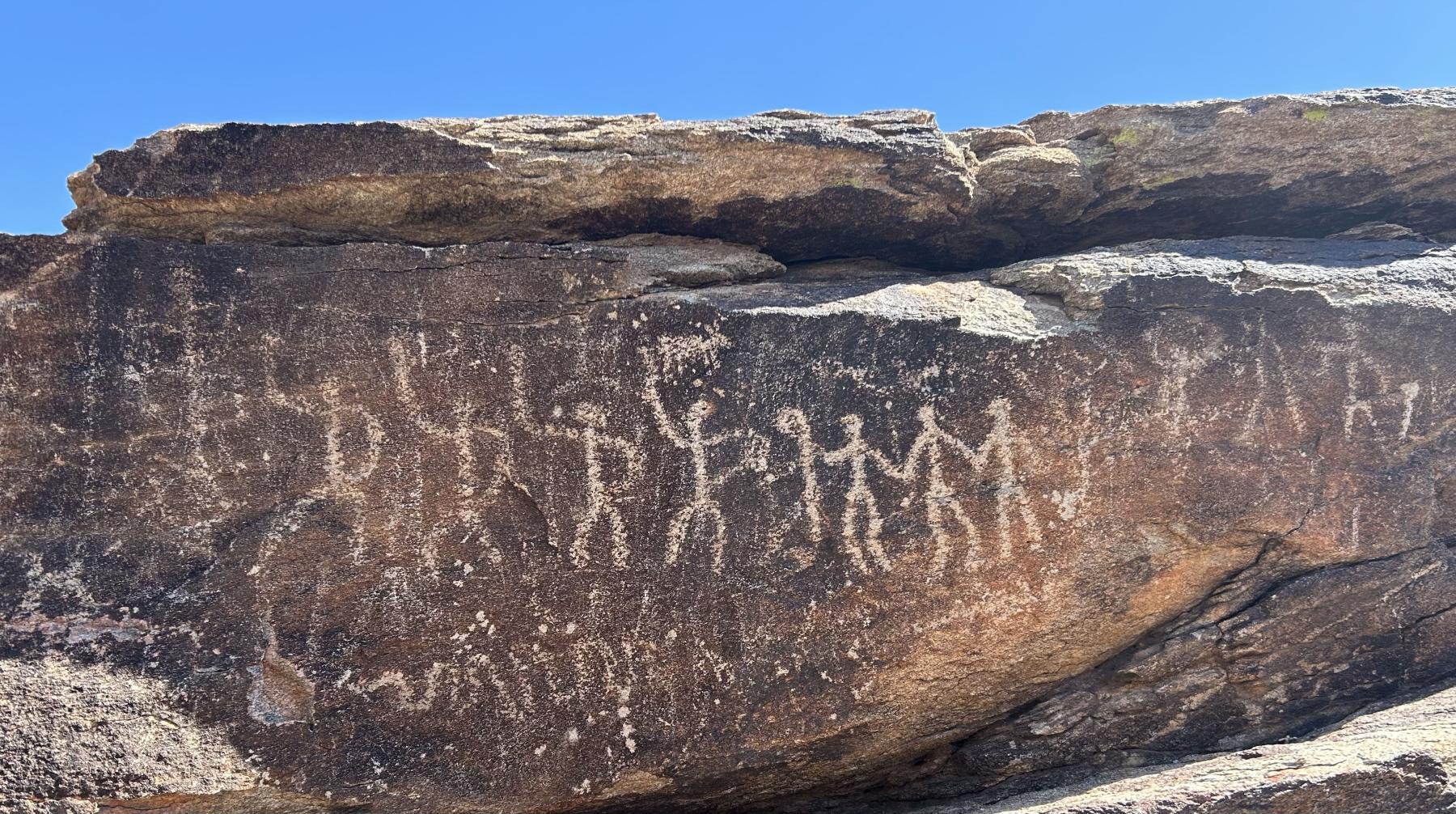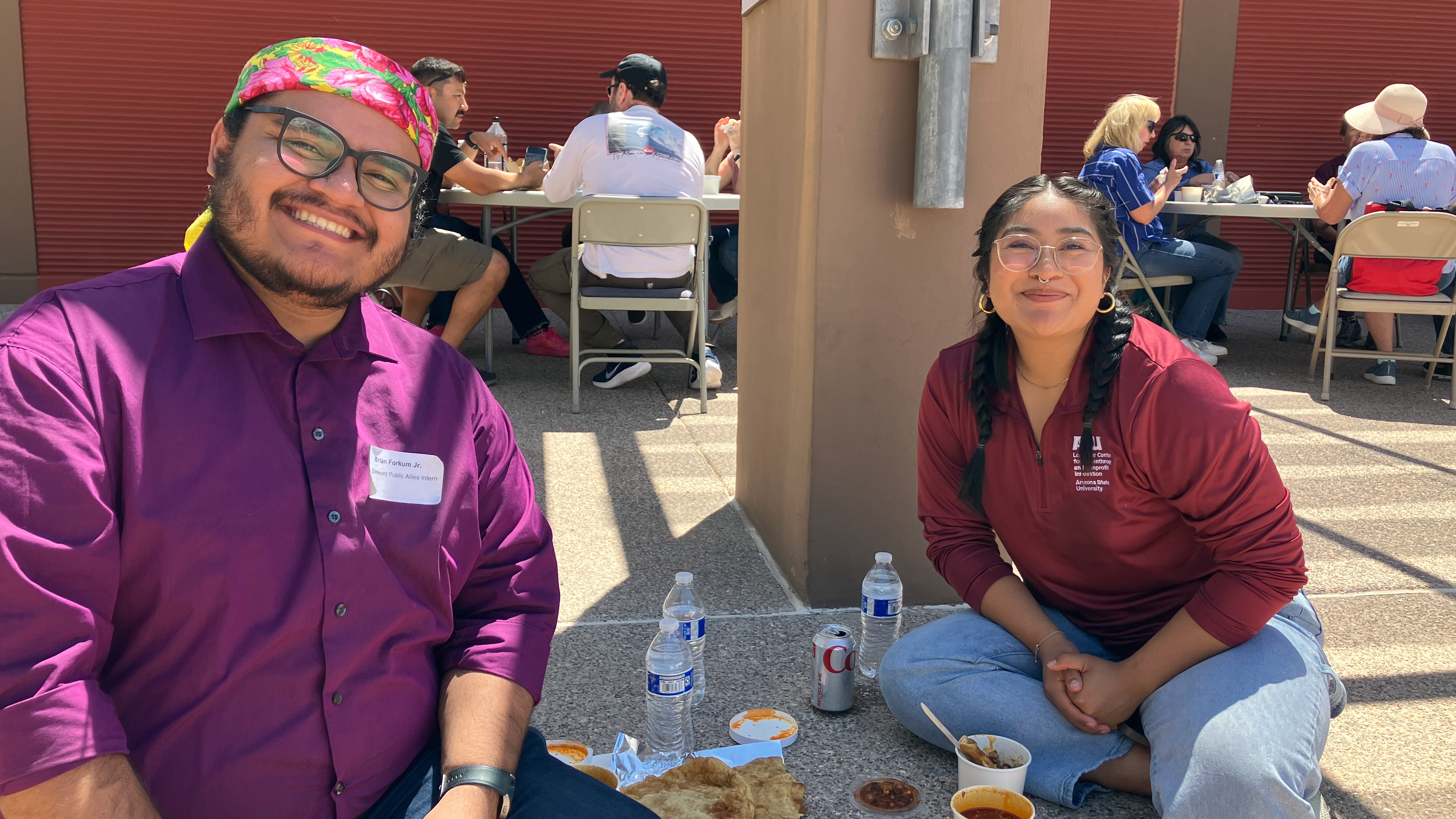
Public Ally Brian Forkum leads volunteers in preserving historic native sites across Arizona
August 7, 2024 — History has been a core facet of Brian Forkum’s life. Growing up in the Navajo Nation, Forkum has always been acutely aware of how history impacts both the present and future. When it came time for university, Forkum attended Arizona State University with a major in history and a minor in Indian American studies.
“I felt like history was just a natural extension to who I was, and it was something I was passionate about,” Forkum said.
This passion continued well beyond his graduation date.
After interning with the National Park Service through the National Council for Preservation Education, Forkum says he was connected with the Public Allies program — a nationwide AmeriCorps program that places emerging leaders in internships with nonprofit organizations. Forkum became a member of the Public Allies Arizona 2024 Cohort, hosted by Arizona State University's Lodestar Center for Philanthropy and Nonprofit Innovation, and was placed with the Arizona State Historic Preservation Office.

Forkum was assigned to work on the organization’s Arizona Site Steward Program, which aims to protect historic and cultural sites across the state from destruction, theft and vandalism. The more than 30-year-old program began as a project by former Arizona Governor Bruce Babbitt and has since evolved into an extensive volunteer-based program spanning the entire state of Arizona. Volunteers, known in the program as “Site Stewards,” monitor historical sites in their assigned region and report all looting and vandalism.
“Thievery for artifacts, glyphs, sand art, and rock art from indigenous groups here were very high and it’s been like that for hundreds of years,” Forkum said. “They realized, ‘If they’re stealing it, it’s probably worth protecting.’”
Forkum’s role was far-reaching in the program, including updating informational materials, as well as meeting directly with volunteers to conduct in-person trainings.
“It is a really fun experience,” Forkum said. “I’m able to take aspects of what I learned and put it in a way to help better our training with volunteers so they can walk carefully with respect.”
According to Arizona Site Steward Program State Coordinator Sean Hammond, Forkum’s knowledge and background have played a strong role in increasing awareness of and respect for indigenous heritage and artifacts.
As a citizen of the Navajo Nation, Forkum entered into the Public Allies Arizona program with cultural knowledge that has informed his work. While he describes a complex relationship with his heritage, he also says he developed a sense of pride in it and how it helps him improve cultural understanding among non-indigenous people.
“Even if it was difficult to be around people that are ignorant or naive about it,” Forkum said. “I know better and I could teach them.”
This attitude played a key role in a regional volunteer training Forkum and Hammond arranged this year.
“The goal of the training was to provide a cultural immersive experience for all Stewards,” Hammond wrote in an email interview. “Brian played an amazing role in putting together the training.”
According to Hammond, Forkum’s responsibilities began at the venue selection. He decided on the Huhugam Heritage Center: a tribal facility and museum for indigenous cultural artifacts and art in the Gila River Indian Community.
“I knew about the Huhugam Heritage Center, but I never visited before,” Forkum said. “I was like, ‘let’s give it a shot.’”
From the first visit, Hammond described being “blown away” by the location and its powerful representation of indigenous culture. The center’s permanent gallery of artifacts details the history and culture of the indigenous tribes of the Gila River Indian Community.
From there, Forkum took on finding vendors for the event, connecting with a multitude of indigenous vendors from artists to a local restaurant-owner.
“All of them offered great support in insight into the indigenous area within that region,” Forkum said.
The event was held successfully in April 2024. Overshooting the 50 volunteers estimated to attend, Hammond says he was surprised by the level of interest shown.
“As each week passed our sign-up sheets continued to grow,” Hammond wrote. “It got to the point where we had to put people on wait-lists and even had people who were not signed up still show up.”
The positive experience as well as his heritage and passion for history has encouraged Forkum to continue to pursue historic preservation, especially as it relates to indigenous communities.
“The work I’m trying to do now is definitely being persuaded by my indigenous background and cultural understanding,” Forkum said. “I just want to make sure that communication from here on out is better and that people understand.”
Image: Petroglyphs in Pima Canyon, one of the sites that is part of the Arizona Site Steward Program
Story by Lillian Finley, ASU Lodestar Center
Learn more about how Public Allies Arizona is helping nonprofits build their capacity
Do you have a project that you would love to implement, but lack the staff capacity or other resources? We help our partners increase their capacity to achieve their mission by matching them with diverse, talented individuals from the community.
Public Allies Arizona places these emerging leaders in full-time service to nonprofits in Phoenix and Tucson communities. These nonprofits, called Partner Organizations, are chosen based on their ability to provide the Ally with significant work experience, as well as their need for an innovative young leader who can help them take on a project they otherwise could not afford or infuse energy into an existing project.
- ASU Lodestar Center welcomes Levi Colton as Director of Programs and Social Impact
- In the news: 6 under-the-radar local nonprofits — and how our Nonprofit Job Board helped one leader find a dream opportunity